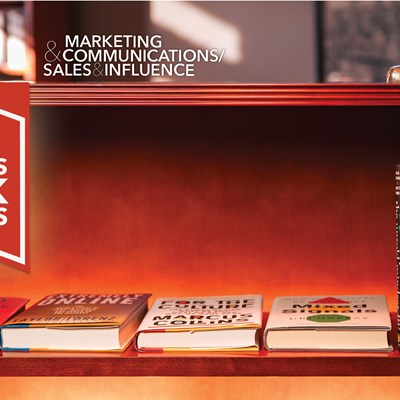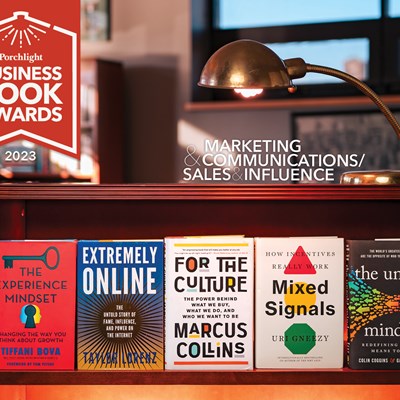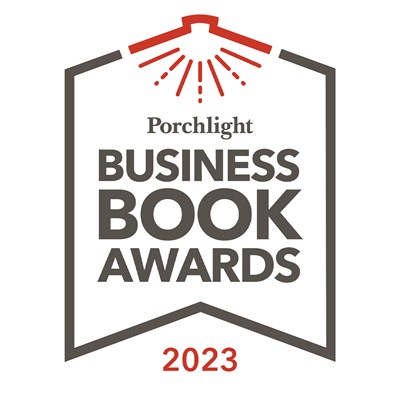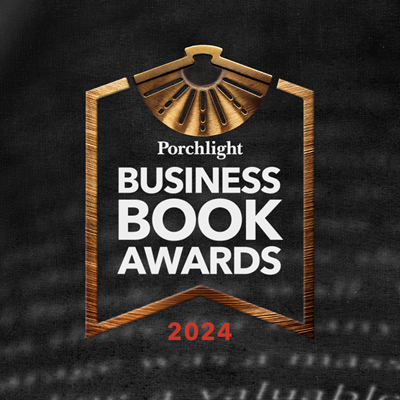For the Culture | An Excerpt from the Marketing & Communications/Sales & Influence Category
December 21, 2023
The architect of some of the most famous ad campaigns of the last decade argues that culture is the most powerful vehicle for influencing behavior, and shows readers how to harness culture to inspire other people to share their vision.
Marcus Collins has worked at an advertising agency founded by Steve Stoute and Jay-Z, worked for Beyonce and the Brooklyn Nets, Weiden + Kennedy and Apple. The Cliff Paul/Chris Paul commercials for State Farm? That was the work of Dr. Collins. To do that work, he has learned from the work of Dan Ariely and George Loewenstein, Daniel Kahneman and Marshall McLuhan, and many others. His book For the Culture calls upon all that work to help us understand how culture influences people, and how we can tap into that in our own work. The following excerpt comes from the book’s Introduction.

I do this for my culture.
–Jay-Z
The 1960s were a decade of sweeping social change. From civil rights to gay rights, the Hispanic movement to the second wave of feminism, America experienced a decade of culture shock. These changes brought with them new ideas and new identities, which in turn led to new behaviors and new norms. Take, for instance, the rise of “hippies,” a countercultural collective that was born out of the “Beat generation” the decade prior. Like Beats, hippies rebelled against the conventions of the status quo. They adopted a bohemian outlook that challenged capitalism and traditional norms in favor of egalitarianism and free thought. The cultural characteristics of hippies were obvious, and those who subscribed to their beliefs adopted them in droves. They donned the look—long hair, tie-dyed clothes, bare feet—and adhered to the traditions of free love and (ironically) anticonformity. Over time, their way of life spread across the country and amassed legions of new community members.
In 1965, at least a thousand hippies lived on Haight and Ashbury Streets in San Francisco, California. By 1966, that number had jumped to fifteen thousand. A hundred thousand people attended the 1967 Summer of Love festival in San Francisco, and five hundred thousand people attended the Woodstock music festival in 1969. Before long, millions of people had adopted the hippie cultural characteristics. Soon the counterculture had become the mainstream culture, but by the end of the decade, the allure of the hippie generation had faded—only to be reborn, just shy of forty years later, as twenty-first-century urban hipsters.
Like hippies, hipsters challenged the ideals of capitalism and bought in to the beliefs of egalitarianism. But instead of the tie-dye and bare feet of their predecessors, hipsters wore plaid shirts with suspenders, “ironic” facial hair, and dark-rimmed glasses. And their adult beverage of choice? Pabst Blue Ribbon beer, also known as PBR. There was nothing in particular about the liquid that endeared it to the hipster community. No proprietary brewing filtration system or special hops that gave it a unique taste. No, there was nothing intrinsic to the beer itself to which PBR’s magnetic pull on urban hipsters could be attributed. Nothing inside the can, that is, but everything outside of it. Everything about the brand.
As a brand, PBR represented autonomy and freedom of expression, both of which were core tenets of hipsters’ shared beliefs and ideology. While other beer brands with enormous marketing budgets spoke to the masses through splashy television ads, PBR strategically used its modest resources to speak to the fringe with off-kilter tactics such as sponsoring bike messenger rodeos and opening artist galleries in hipster havens like Portland, Oregon. PBR eschewed celebrity endorsements and refused to run commercials during the Super Bowl because these tactics seemed out of step with its countercultural beliefs. The brand’s intentional rejection of mainstream sensibilities felt more like a social protest than marketing communications, and this posture fit the rebelliousness of hipsters. PBR didn’t use its marketing resources to convince consumers that the brand was cool. Instead, it actively lived out its beliefs as an outsider brand that deviated from the norm of its more traditional competitors. This made PBR seem cool to hipsters who themselves were outsiders to mainstream America—much like the hippies and the Beats who preceded them. Furthermore, PBR didn’t “market” to hipsters. It was “chosen” by hipsters who shared a penchant for dissent with the brand. And these fellow dissenters consumed PBR as a symbol of protest.
PBR was more than a beer for the hipster community. It was a badge of identity, a receipt of hipsterdom—a lifestyle of dissent and autonomy—that transcended the functional utility of the product and elevated it to an artifact within the hipster culture. Subsequently, those who subscribed to this identity naturally drank PBR, and it spread to other like-minded communities as well—to the tune of roughly two hundred million liters over the course of five years. While category leaders such as Bud Light and Busch were declining, PBR was experiencing hockey-stick growth. Within a matter of four short years, the 150-something-year-old company had become a $1 billion business, thanks in large part to the hipster community and its cultural consumption.
We see this kind of relationship everywhere. Like skaters to Supreme, early hip-hop to the LA Raiders, and Republicans to Fox News, people gravitate to the entities that are representative of their identity and corresponding beliefs. We have seen this phenomenon play out in the acceptance and adoption of fashion (Yeezy sneakers), music (Cardi B), cars (Tesla), smoking (Marlboro), dieting (Atkins), and political affiliations (MAGA). They manifest in collectives like the Harley-Davidson Owners Group (affectionately known as H.O.G.s), Apple fanatics, Patagonia loyalists, hypebeasts, QAnon members, and Bernie Bros. The actions of the people in these groups extend far beyond a commitment to a shared consumption behavior or voting allegiance. Their identity is intentionally reflected in and projected through these brands, so strongly that the brand, product, or organization transcends its categorical label and becomes a part of their cultural practice.
This is the power of culture. It’s contagious, and it influences people to move in predictable ways. Whether we are aware of it or not, this influence is happening all around us all the time. And those who understand the dynamics of culture are more likely to have influence, while those who do not are almost always influenced by those who do. It doesn’t matter if your product is better or your cause is more noble. The ones who lead culture—who contribute to the cultural characteristics of a community—tend to be more successful than those who follow trends.
For years, Bose was considered the trusted category leader in the consumer audio electronics space. But when Beats by Dre came to market in 2011, it rapidly overtook Bose’s standing. Was Beats a better product? Sonically speaking, it empirically was not. But Beats was more than just a device for listening to music. It was a symbol that signaled to the world who you were and, perhaps, even who you were not. People walked around with Beats headphones around their neck as an accessory, a cultural artifact, that just happened to play music. As the cultural scholar Douglas Holt put it, “Culture side-steps conventional value propositions, functional or category benefits, and mind-share marketing.” It moves beyond a brand having the sharpest razor, the fastest car, or the longest-lasting battery. Culture supersedes all these product differentiators because it does not revolve around what the product is. Culture focuses on who we are.
All of this begs a series of questions. What is culture exactly? Why does it have such a powerful effect on people? And finally, how might a marketer, manager, leader, or entrepreneur leverage the power of culture to influence collective behavior and inspire people to move? Well, my friends, that’s exactly what this book aims to address.
Excerpted from For the Culture: The Power Behind What We Buy, What We Do, and Who We Want to Be.
Reprinted by permission of PublicAffairs, an imprint of Hachette Book Group.
Copyright © 2023 by Marcus Thomas Collins.
All rights reserved.









